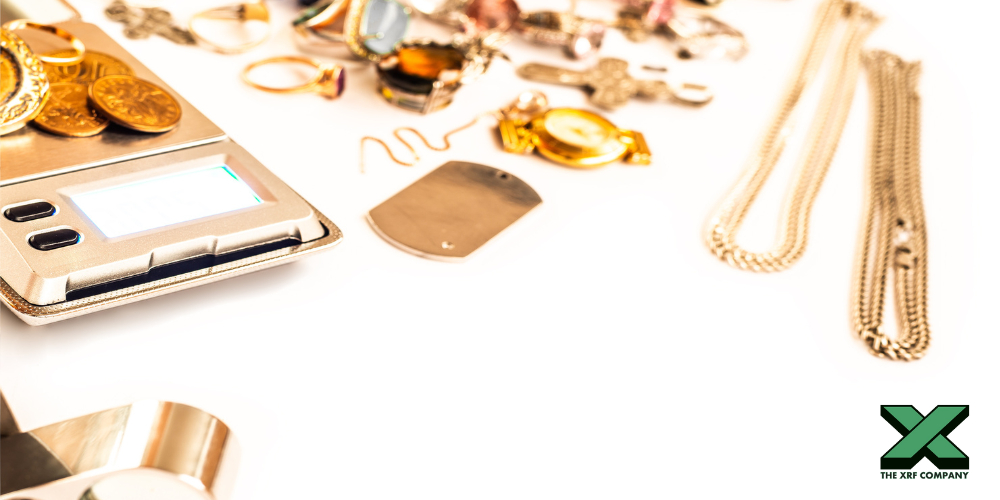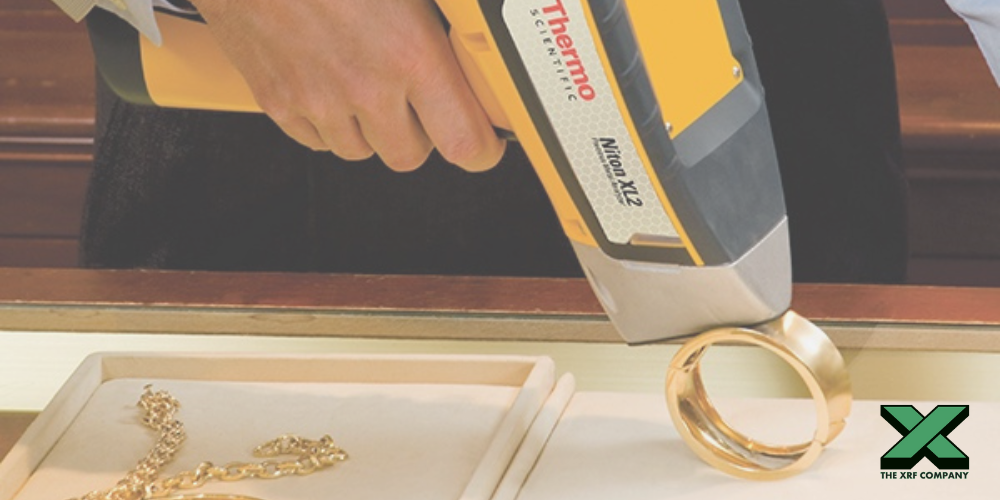3 min read
Use X-Ray Fluorescence (XRF) Analyzers to Test for Gold
When it comes to testing for gold, precision, speed, and reliability are non-negotiable. Whether you’re a jeweler, a pawnshop owner, or in the...
3 min read
Madelyn Donovan : Sep 25, 2024 9:49:33 AM

Because the value of gold is currently at a record high, authenticating your gold jewelry, coins, dental accessories, bullion and more is critically important today.
You need to ensure that you get the cash you deserve. To do that, you will need a testing method that is just as reliable.
Here are some different ways to test for pure gold, as well as each of their pros and cons.

X-Ray Fluorescence (XRF) is a technique for determining the elemental makeup of materials. To test for gold, a device called an XRF analyzer or XRF gun is aimed at the material and exposes it to high-energy X-rays. The atoms in the material react to these X-rays and, depending on their reaction, the device can determine which element or elements the material consists of.
Vendors that provide pre-owned analyzers like The XRF Company can help mitigate these disadvantages. Thanks to our certified pre-owned analyzer collection, and our team being available to help with any training required, you can rest assured that XRF is a great method to choose for verifying the authenticity of your gold.
An acid test is done by applying specific acids to a sample to see how they react. A few drops of acids (typically nitric acid and hydrochloric acid) are dropped to a small portion of the sample and then observed to determine whether there is a reaction. If there is a reaction, the sample is not pure gold: pure gold won't react with the acid applied.
Fire Assay consists of taking a metal sample in a powder form and melting it down to determine whether it is a pure metal or contains impurities.

A specific gravity test determines the purity of gold by comparing its measured density to the measured density of water.

Electrical conductivity testers are devices that determine the purity of gold by sending electrical waves into the metal and observing its resulting conductivity. Pure gold has a high electrical conductivity, so a sample can be determined authentic or inauthentic depending on its resulting conductivity level.
In conclusion, each method of testing gold has its own advantages and disadvantages. The
method you choose will depend on your needs, budget, and the type of gold you are testing. It is
important to use a reliable and accurate method to ensure that your gold is pure and authentic.
The XRF Company sells quality XRF analyzers so that you can test for gold using the best methods while mitigating startup costs. Reach out today!

3 min read
When it comes to testing for gold, precision, speed, and reliability are non-negotiable. Whether you’re a jeweler, a pawnshop owner, or in the...

3 min read
At XRF Company, we understand the growing need for cost-effective and flexible access to cutting-edge XRF technology. That’s why we are excited to...
2 min read